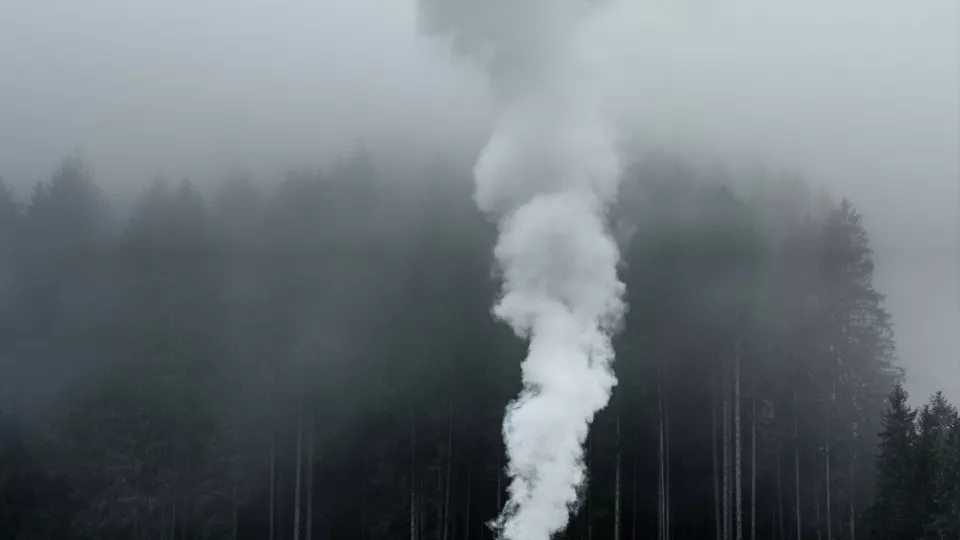Soothing, beautiful, disturbing, boring or depressing. Clouds can be many things depending on the weather and the mood of the viewer. But no matter what they may look like, they always play a very important role for life on earth.
A cloud consists of small airborne water particles (cloud droplets and/or ice crystals) which reflect and scatter both sunlight and the earth’s heat radiation. In addition to being an important part of the global water cycle, the cloud cover around the earth accounts for a large part of the global radiation balance which when disturbed can have far-reaching consequences for the climate. In a world with no humans, or at least without humans that give rise to pollutants, the system is in balance. However, in today’s polluted world it is relatively certain to say that humans have affected the atmosphere’s ability to form cloud droplets and ice nuclei particles. The main source of soot particles is different types of combustion.
Someone who knows a lot about this is doctoral student John Falk who is currently working on his dissertation on cloud droplet particles and ice particle formation.
"Humans release large amounts of particles into the atmosphere, mainly through the combustion of biomass. This is a major problem, especially in poor countries where people are forced to burn biomass or agricultural waste to be able to cook and to have access to heat and lighting."
Small, but important impact
Through laboratory studies John Falk has looked at how particulate emissions from various sources, mainly from traditional stoves (common in sub-Saharan Africa) and diesel engines, can lead to formation of cloud droplet and ice formation. He has also generated soot particles using a flame soot generator in the laboratory with the aim of studying how their properties affect the ability to form ice. But despite the attempts, John Falk does not want to give a definitive answer as to whether, or to what extent, soot particles affect cloud formation.
"However, other particles from the combustion of biomass seem to have a potentially large impact on the clouds by, among other things, changing precipitation patterns."
So far, knowledge about ice particle formation in clouds has been scarce and researchers have long tried to determine whether soot contributes to an increased proportion of ice particles in the clouds. In recent times, however, the researchers have begun to lean towards them not having a significant impact and John Falk has reached similar conclusions. That is that soot is generally inefficient at forming ice particles. But due to the extremely large amounts of soot that humans generate, the effect on the cloud cover may still be significant, especially at regional levels.
"Since these are such large quantities, it is still important to understand how they are formed and what makes them able to be formed. A few ice particles in a cloud otherwise consisting of only cloud condensation nuclei can drastically change the properties of the cloud", he says.
Since no soot particle is the same as the other, the biggest difficulty according to John Falk has been to try to identify which properties of the ice nucleating particles that give them its ice-forming abilities.
"The methods that exist for measuring the properties of particles are based on a kind of means of larger groups of particles. In the event that only a small proportion of soot particles would have properties relevant to ice formation, it is not possible to identify them with these methods. This is a limitation we have had to work with, but we have still had the opportunity to study the general characteristics, which if nothing else provides a good basis for further studies."
Cleaner stoves not always better
Three to four billion people are estimated to use traditional stoves and traditional fuels (everything from wood to petrol to liquid gas) to heat and light their homes and to cook. Not only does the air pollutants contribute to global warming, they are also linked to an increased incidence of tracheal diseases, lung cancer and cardiovascular diseases, which are responsible for more than four million premature deaths every year.
John Falk describes his research as fairly basic, but believes that it can contribute to better understanding the large-scale consequences of anthropogenic emissions, for example in development of better climate models. Mainly because it is important to understand the extent to which different combustion sources lead to the formation of ice and cloud condensation nuclei and thus their climate impact.
So, if soot particles are bad, will the problem be solved if people in poor countries buy an electric stove? Well, it's not that simple, according to John Falk.
"It is a complex question. Cleaner stoves are clearly better for our health, but they are generally not an alternative for the large proportion of the population in poor countries. Also, cleaner emissions from stoves could potentially lead to fewer cloud droplet-forming particles and thus a warming effect. It is therefore important that we better understand these particle sources in order to be able to make more informed decisions for the future."
